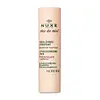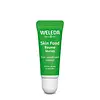What's inside
What's inside
 Key Ingredients
Key Ingredients

No key ingredients
 Benefits
Benefits

 Concerns
Concerns

 Ingredients Side-by-side
Ingredients Side-by-side

Octyldodecanol
EmollientButyrospermum Parkii Butter
Skin ConditioningMacadamia Integrifolia Seed Oil
Skin ConditioningPolyethylene
AbrasiveGlyceryl Behenate
EmollientPrunus Amygdalus Dulcis Oil
Skin ConditioningOleic/Linoleic/Linolenic Polyglycerides
EmollientOryza Sativa Cera
Skin ConditioningCera Alba
EmollientHelianthus Annuus Seed Oil Unsaponifiables
EmollientHydroxystearic/Linolenic/Oleic Polyglycerides
EmollientJojoba Esters
EmollientCitrus Grandis Peel Oil
MaskingOryza Sativa Bran Oil
EmollientSafflower Oil/Palm Oil Aminopropanediol Esters
Skin ConditioningTocopheryl Acetate
AntioxidantTocopherol
AntioxidantButyrospermum Parkii Butter Extract
Skin ConditioningCitrus Limon Peel Oil
MaskingArgania Spinosa Kernel Oil
EmollientMel
EmollientHordeum Vulgare Cera
EmollientWater
Skin ConditioningPEG-8
HumectantCitric Acid
BufferingLimonene
PerfumingCitral
PerfumingLinalool
PerfumingGeraniol
PerfumingOctyldodecanol, Butyrospermum Parkii Butter, Macadamia Integrifolia Seed Oil, Polyethylene, Glyceryl Behenate, Prunus Amygdalus Dulcis Oil, Oleic/Linoleic/Linolenic Polyglycerides, Oryza Sativa Cera, Cera Alba, Helianthus Annuus Seed Oil Unsaponifiables, Hydroxystearic/Linolenic/Oleic Polyglycerides, Jojoba Esters, Citrus Grandis Peel Oil, Oryza Sativa Bran Oil, Safflower Oil/Palm Oil Aminopropanediol Esters, Tocopheryl Acetate, Tocopherol, Butyrospermum Parkii Butter Extract, Citrus Limon Peel Oil, Argania Spinosa Kernel Oil, Mel, Hordeum Vulgare Cera, Water, PEG-8, Citric Acid, Limonene, Citral, Linalool, Geraniol
Ingredients Explained
These ingredients are found in both products.
Ingredients higher up in an ingredient list are typically present in a larger amount.
Geraniol is used to add fragrance/parfum to a product. It is the main component of citronellol. It is a monoterpenoid and an alcohol.
Monoterpenes are naturally found in many parts of different plants.
Geraniol can be found in many essential oils including Rose Oil and Citronella Oil. The scent of Geraniol is often described as "rose-like". Many foods also contain Geraniol for fruit flavoring.
Geraniol can irritate the skin when exposed to air. However, irritation depends on the ability of geraniol to penetrate into the skin. In general, geraniol is not able to penetrate skin easily.
Geraniol is colorless and has low water-solubility. However, it is soluble in common organic solvents.
Like citronellol, it is a natural insect repellent.
2,6-Octadien-1-ol, 3,7-dimethyl-, (2E)-
Learn more about GeraniolLimonene is a fragrance that adds scent and taste to a formulation.
It's found in the peel oil of citrus fruits and other plants such as lavender and eucalyptus. The scent of limonene is generally described as "sweet citrus".
Limonene acts as an antioxidant, meaning it helps neutralize free radicals.
When exposed to air, oxidized limonene may sensitize the skin. Because of this, limonene is often avoided by people with sensitive skin.
The term 'fragrance' is not regulated in many countries. In many cases, it is up to the brand to define this term. For instance, many brands choose to label themselves as "fragrance-free" because they are not using synthetic fragrances. However, their products may still contain ingredients such as essential oils that are considered a fragrance.
Learn more about LimoneneLinalool is a fragrance and helps add scent to products. It's derived from common plants such as cinnamon, mint, citrus, and lavender.
Like Limonene, this ingredient oxidizes when exposed to air. Oxidized linalool can cause allergies and skin sensitivity.
This ingredient has a scent that is floral, spicy tropical, and citrus-like.
Learn more about LinaloolWater. It's the most common cosmetic ingredient of all. You'll usually see it at the top of ingredient lists, meaning that it makes up the largest part of the product.
So why is it so popular? Water most often acts as a solvent - this means that it helps dissolve other ingredients into the formulation.
You'll also recognize water as that liquid we all need to stay alive. If you see this, drink a glass of water. Stay hydrated!
Learn more about Water